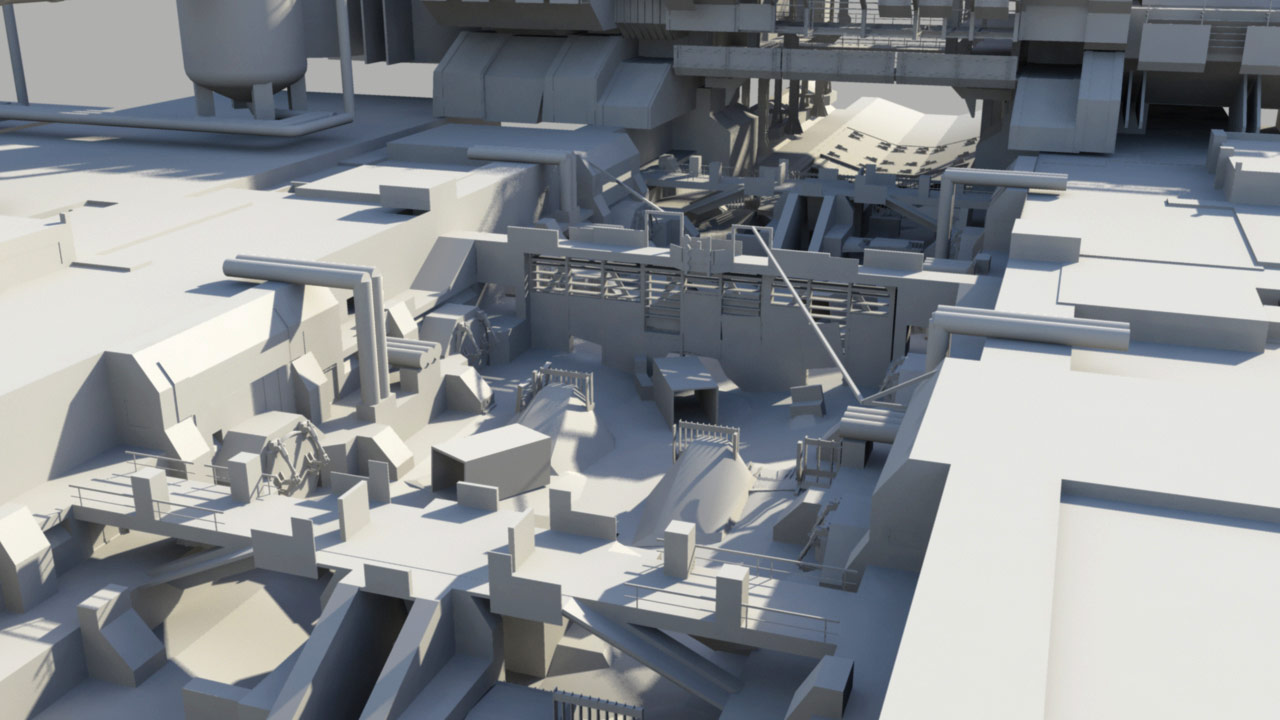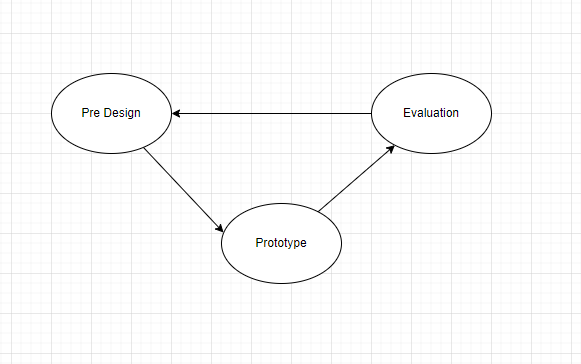CREATIVE PRACTICE
CREATIVE PRACTICE
Week 1
Week one Exercise: positioning yourself as a design researcher
How do I make:
- Iteratively by different version
- Mapping (keywords, concepts, think), Previsualization (concept art, sketches), Playtesting.
- Mapping allows me quickly diverge my design ideas and inspire myself again using those ideas. Previsualization allows me to examine my ideas or designs in visual way. Playtest is an easy way to find and fix possible problems also allows you as a content creator to collect other people’s opinions and inspire you again based on their views.
What do I make:
- I make games, but the word ‘game’ is too broad. During the making process of game, it contains many other design positions. So more specifically, I create the core game mechanics that make the game playable and show other people what they can do in this game, also create game levels as the playground for players.
- … not sure
- The whole iterative progress is a test and fixing progress. It shapes my ideas by repeatedly testing and fixing, and coming up with new questions., It leads me to a deeper research area.
Why do I make the things I make?
- I choose to be a game designer because I like to play video games so that curious me how I create a game. What do I need to do to create a game? What do I need to design through the progress of making the game? Yep, I join this industry with a strong personal subjectivity.
- Digital design – Game design.
- Digital design help shaped my understanding of design, it allows me to understand more professional knowledges that can help with the preproduction and production progress when making a game.
Week 2
keywords:
level desgin
Cover-base shooter game
Ebgagubf combat
Narrative
Guidance
My practice is to iterate the design project through different versions of tests and examinations, to ensure the research’s explanation and correctness and verify the possible research result.
Game Design Documentation:
In my practice, this method is a staged research summary and preliminary overall project design. This method will always first start during the pre-production stage. The Game design documenting method collects and organizes all the pre-visualization contents into one file, then starts the first design of game types, combats, levels, and ways to narrative using texts and sketches. Search for similar existing game works as design references. All materials, ideas, sketches, and pictures relative to this project must be in the same file as the project framework and work plan.
This method allows me to conduct periodic research summaries after a rough investigation of my interest also frame my project based on the research, and complete the preliminary design of the whole project. This design document will slow iteration until it becomes more mature, during the pre-production and production progress.
Prototyping:
Prototyping is the method of making 3d game demos to test the combat systems and level designs. To see how different environments layouts in different game levels can affect the environmental narrative and guidance for players. This practice mainly happens in the game engine by programming the core game mechanics and using no textured simple cube objects to represent the final level to achieve the goal of testing quickly. Sometimes I need to use sketches to bring all the design elements out of my brain before making them in the game engine. This method allows the project iteration through testing and also keeps patching the project with new questions and answers.

Prototyping (Grey Box ) *Picture from internet
Week 7
Exercise One: Ethics QuestionnaireExercise One: Ethics Questionnaire
Upon completing AUTEC’s ethics questionnaire, I was instructed to contact either my lecturer or the AUTEC Secretariat. So, I assume that my project requires an ethics application.
The reason I may require an ethics application is that during the process of exploring level design and how to achieve it, I may need to have conversations with level designers who work in the industry regarding their designs. By discussing with experienced level designers, allows me to enhance my sources of information related to level design and gain a more comprehensive understanding of its implementation methods.
As someone working in the industry, the information from these designers who have actually designed different levels may be more practical and can also verify and confirm the knowledge obtained from books. The design methods they use, have already been applied in various released games and reviewed by players and peers. Therefore, the positive feedback indirectly confirms the correctness and accuracy of these level design methods.
Exercise Two: Research Methods

Level Design Pipeline. 1
1. Robert. Yang et al., The level design book, “ What is level design,” https://book.leveldesignbook.com/introduction.
Method 1:
Case study
Aims:
Collecting information related to level design
Keywords relevant to this aim:
Case study, level design, Data collection, Reverse engineering
(Methods) How will this aim be achieved through practice?
By reverse engineering levels in third-person adventure games, I aim to obtain information on different level design methods, concepts, and approaches.
Describe the practice-based tools/processes you plan to explore to achieve this aim.
The case study will primarily involve reversing researching levels of games and collecting design elements from these levels through peer analysis or analysis by the level creators themselves.
Reverse engineering involves replaying a selected game, and this gameplay process differs from the normal process that regular players use to play games. My gameplay process is purposeful and full of questions about how the game’s level design was carried out, what techniques were used, and what methods were employed. Note-taking during the gameplay process is essential, with map elements such as my path through levels, different gameplay mechanisms encountered, difficulties faced, the guidance received, etc… Additionally, analyzing the level design process with peers or even with the level designer (if available) deepens my understanding of level design and encourages reflective thinking. Comparing my own map-making and annotations with those of peers’ analyses on level designs further enhances my learning.
Discuss the reasons why you have chosen these tools/processes.
Reverse engineering is a common research and learning method in digital design. Through this process, I will be able to analyze completed game projects and answer the questions raised by the case studies of these games through my own analysis of levels. This process of answering questions is a way to enhance my understanding of design elements and aesthetic cognition.
(Paradigm) What worldview or existing framework situates this aim?
None
Identify any, ethical, historical, social, political, cultural contexts that inform this aim and your selection of tools and processes?
None

Creating good creative works requires time to polish and deeply design, with a step-by-step approach to creating high-quality level designs. My creative method involves iterative design, creating a design cycle through different methods, and achieving a high-quality final product through iterations at different stages.
Method 2:
Pre-design
Aims: Game design, level design, planning the project
Keywords relevant to this aim:
Game design, level design, planning the project
(Methods) How will this aim be achieved through practice?
Using concept art, writing, and sketches to conceive the game. Complete the overall game mechanics and gameplay that can interact with level design, and based on this foundation, complete simple designs of levels in sketch form.
Describe the practice-based tools/processes you plan to explore to achieve this aim.
Pre-design is the initial stage of the entire iterative design cycle, levels serve as both a presentation container for the game and a design element that is restricted by the game’s theme and gameplay. The design of levels should align with player mobility, gameplay, and other relevant factors to ensure consistency with the overall game. To achieve this, I will create a comprehensive Game Design Document (GDD) that confirms basic gameplay, existing game mechanics, and character mobility, as well as Concept Art for designing environments within levels. Finally, based on case study data obtained during application and designed through sketches that are closely related to concept art.”
Discuss the reasons why you have chosen these tools/processes.
Pre-design is a crucial phase in the iterative design method. After creating the Game Design Document (GDD), it serves as the blueprint for the entire design phase. Following each item in the GDD design ensures that my goals remain focused and prevents any loss of direction during the extended period of creation.
(Paradigm) What worldview or existing framework situates this aim?
None
Identify any, ethical, historical, social, political, cultural contexts that inform this aim and your selection of tools and processes?
None
Method 3:
Prototype
Aims: Creating game prototypes and level prototypes through game engines.
Keywords relevant to this aim:
Game demo, Grey boxing, prototyping
(Methods) How will this aim be achieved through practice?
The prototyping method involves testing and restoring the design from the pre-design method to validate the feasibility and accuracy of the data obtained during the case study phase. This process ensures that the design is practical and can be executed in a meaningful manner.
Describe the practice-based tools/processes you plan to explore to achieve this aim.
The prototyping method commences with creating the game level’s grey box, which involves using simple box objects to construct the initial version of the level based on the level sketch inside the game engine. Subsequently, corresponding 3D models are used to replace the boxes inside the level. After multiple iterations of polishing, the level construction is completed. Finally, interactive items will place within the level to create a fully-realized gameplay experience, bringing the game prototype to a playable stage
Discuss the reasons why you have chosen these tools/processes.
The prototyping phase is the most crucial aspect of the entire project, as it involves the creation of substantial design-related works and testing based on the information collected during the case study phase to ensure that the intended design goals have been achieved. The prototyping method is closely linked to the next method, “Evaluation”.
(Paradigm) What worldview or existing framework situates this aim?
None
Identify any, ethical, historical, social, political, cultural contexts that inform this aim and your selection of tools and processes?
None
Method 4:
Evaluation
Aims: Evaluate the created levels
Keywords relevant to this aim:
(Methods) How will this aim be achieved through practice?
Conducted personal’s critical thinking on the prototype, which involved comparing it with the collected information. Public playtesting was also conducted to obtain feedback to evaluate the effectiveness of the prototype and critical thinking.
Describe the practice-based tools/processes you plan to explore to achieve this aim.
Evaluation is the final method employed in the iterative design cycle. Based on the prototype created, as a designer, I playtest it and use critical thinking to evaluate and reflect on the design concept’s rationality and areas for improvement. Additionally, public testing is conducted from different players’ perspectives to gather feedback and self-evaluation to identify areas that need improvement. As this is a critical review process, the entire prototype may be deemed a failed design. If so, the entire iteration cycle will revert to pre-design methods to restart the process.
Discuss the reasons why you have chosen these tools/processes.
As previously explained, the evaluation stage involves the validation and assessment of the prototype created based on the collected data. This phase determines the effectiveness of the prototype and the accuracy of its design, rendering it especially critical. Additionally, it is an opportunity to obtain and consider feedback from others and restart the iterative design process at the pre-design stage to achieve high-quality design outcomes.
(Paradigm) What worldview or existing framework situates this aim?
None
Identify any, ethical, historical, social, political, cultural contexts that inform this aim and your selection of tools and processes
None